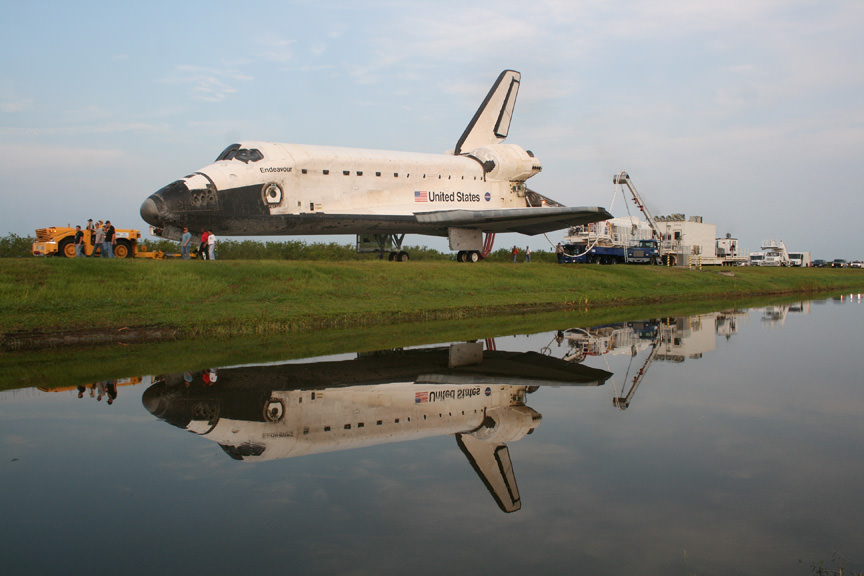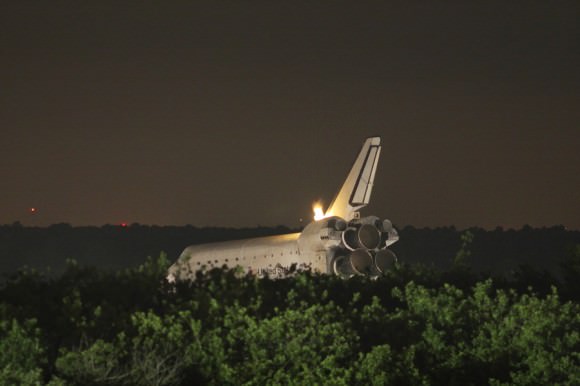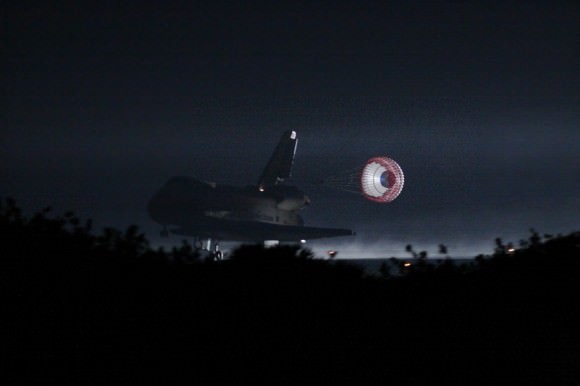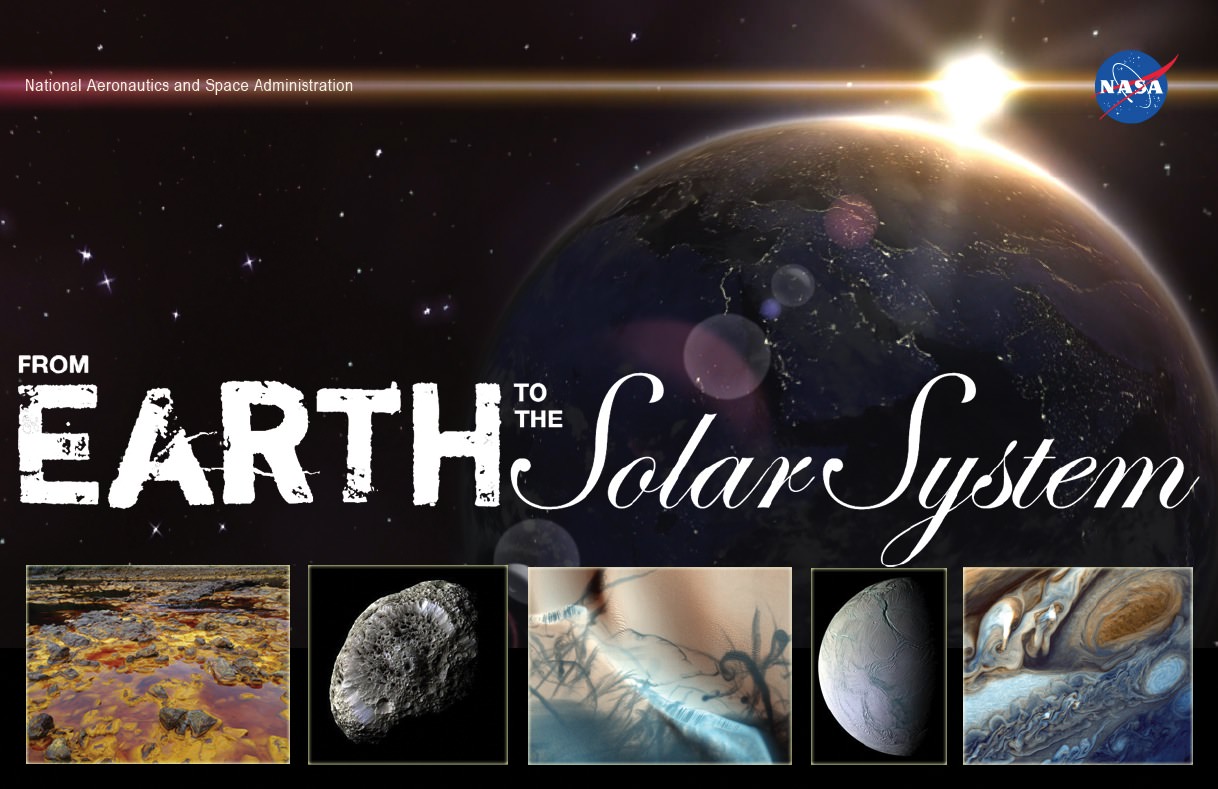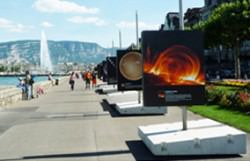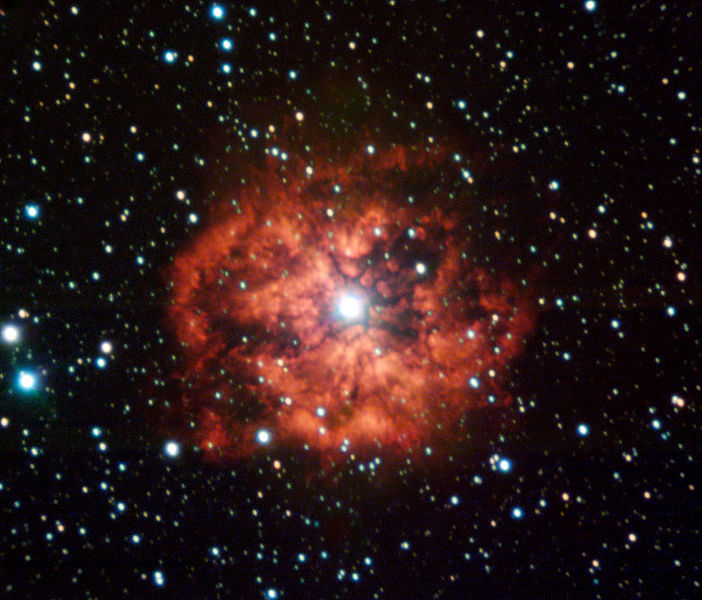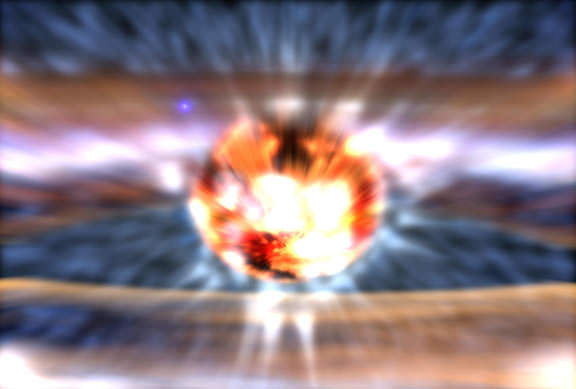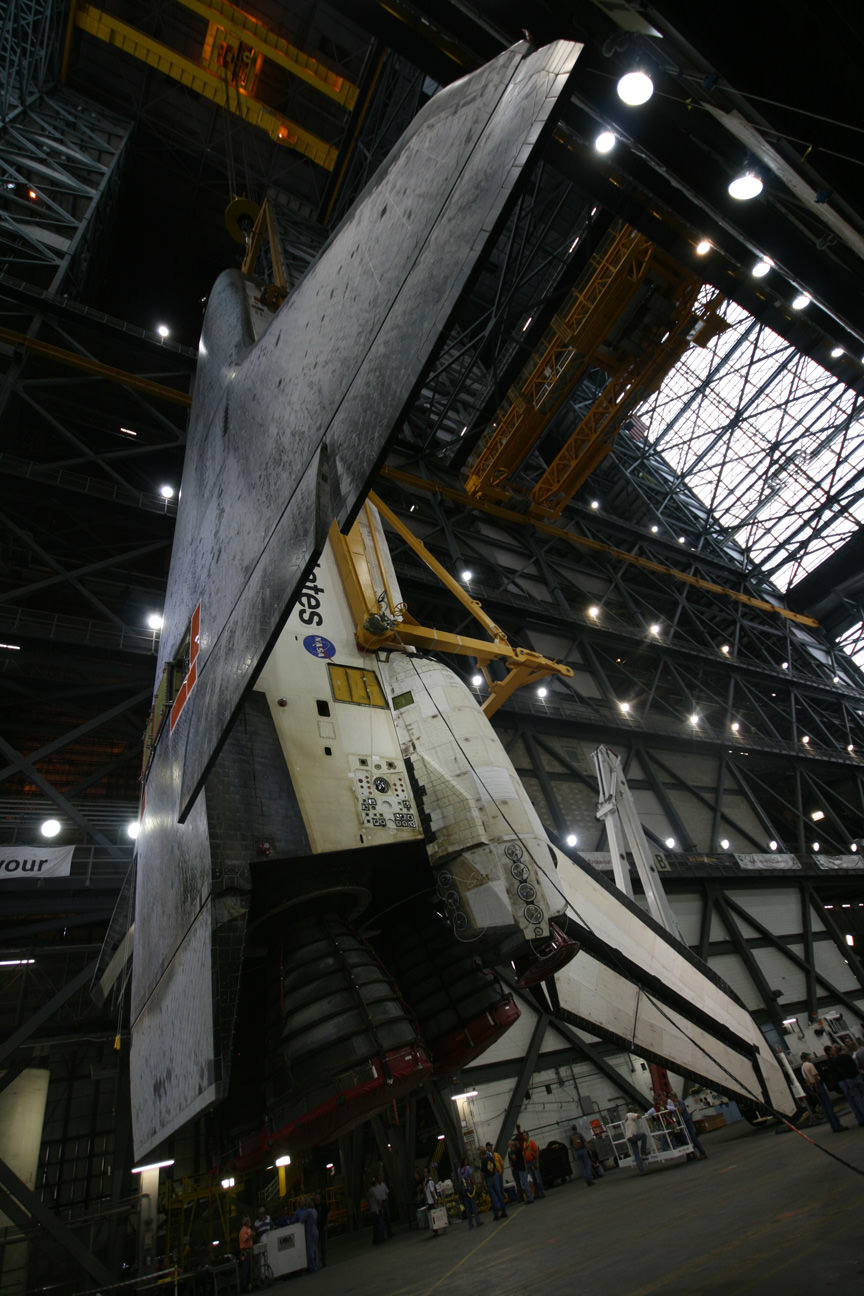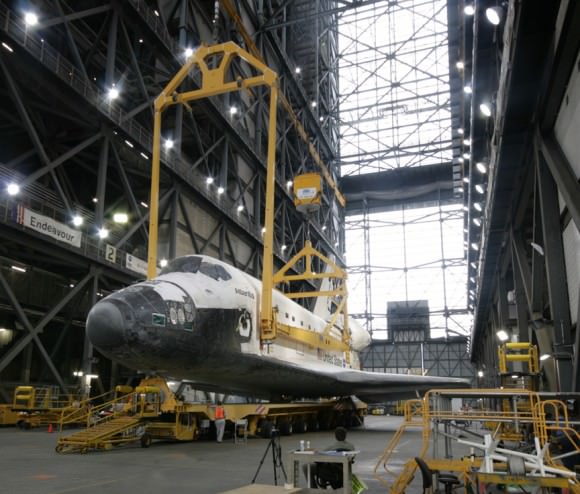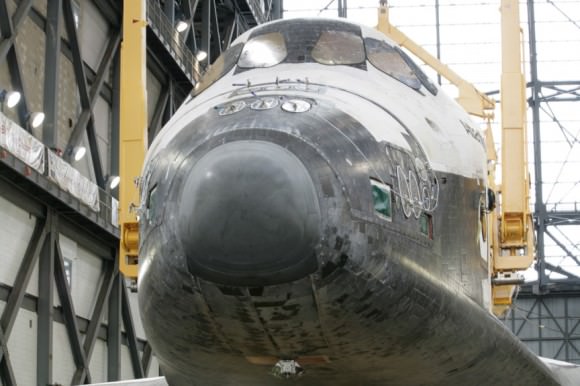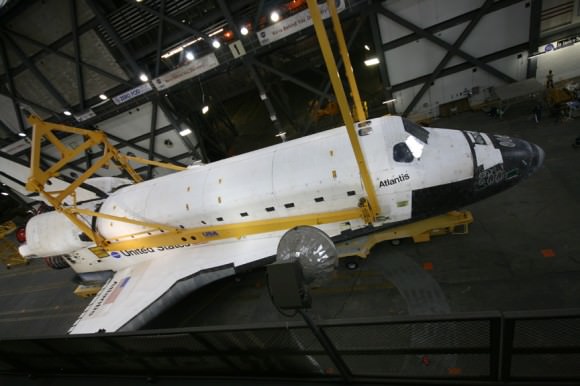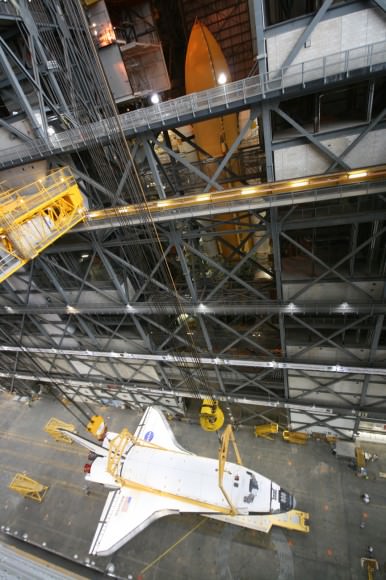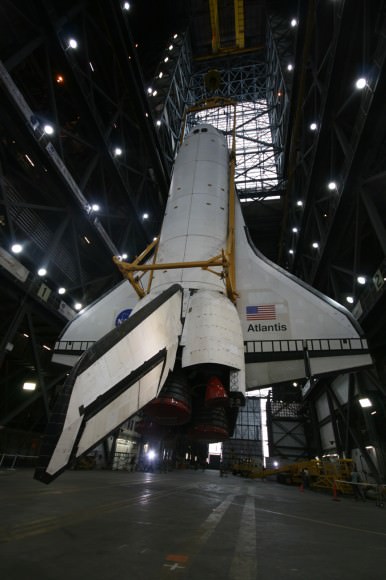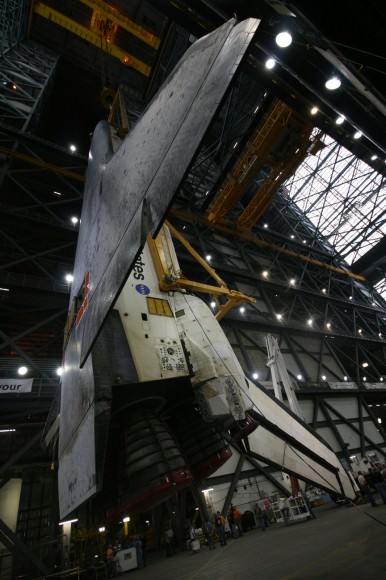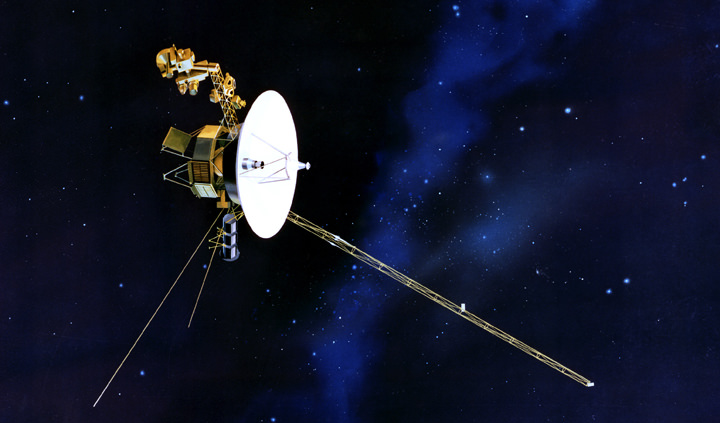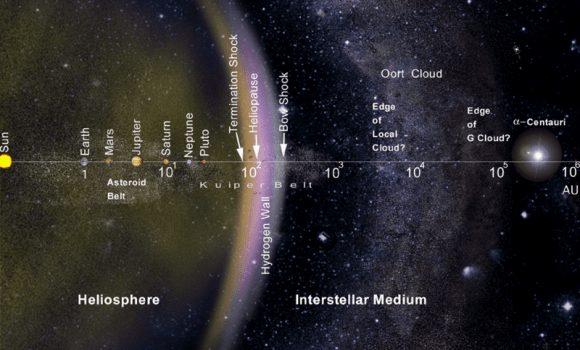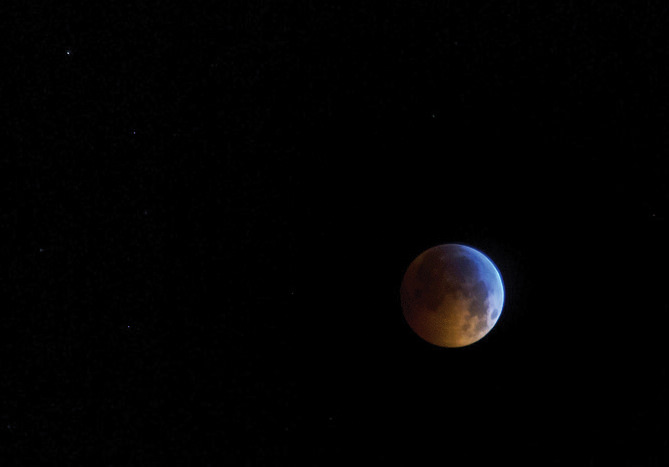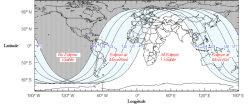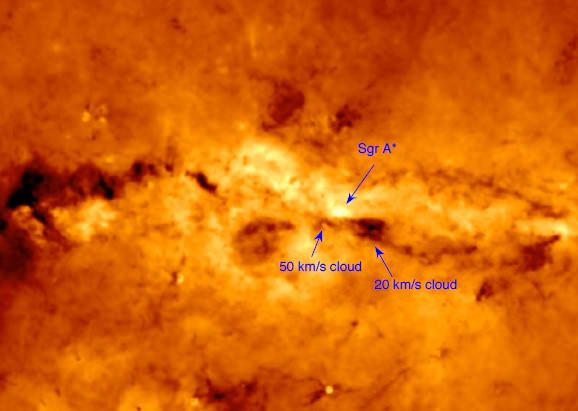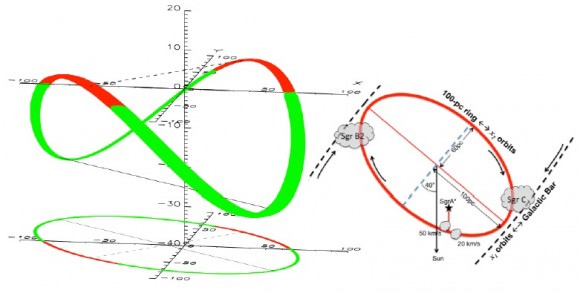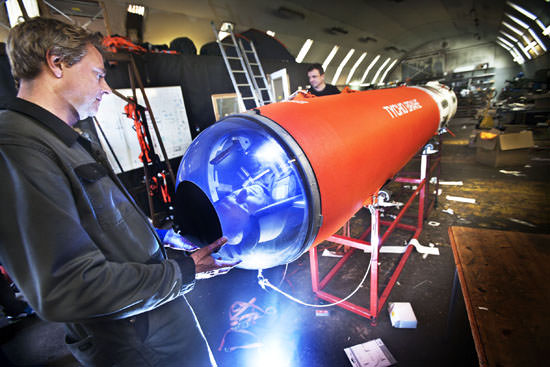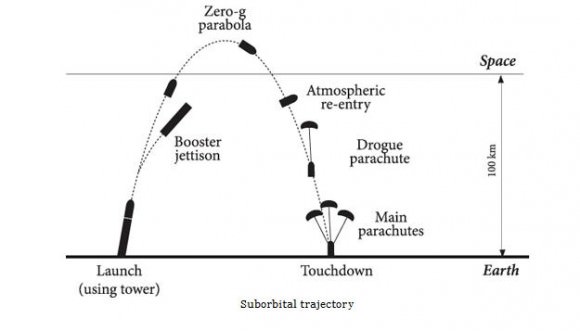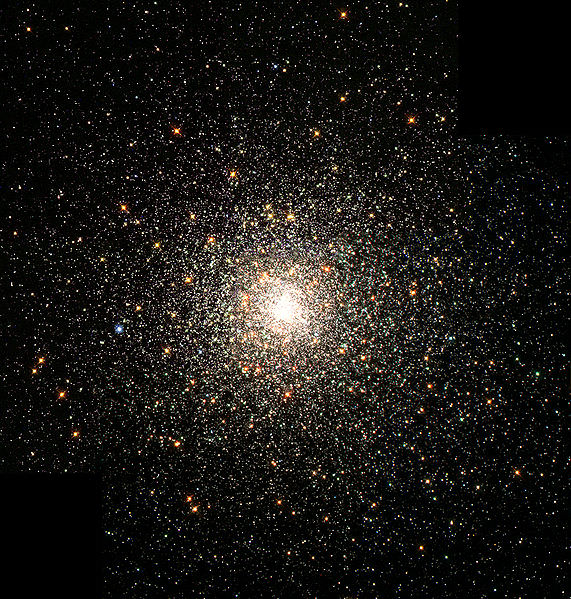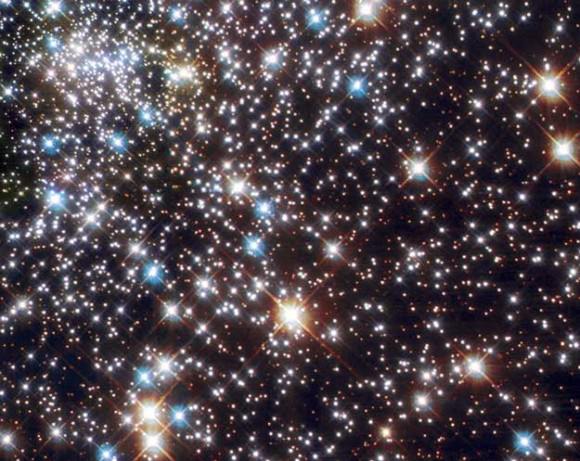[/caption]
KENNEDY SPACE CENTER – Space Shuttle Endeavour and her six man crew landed safely today at the Kennedy Space Center in Florida at 2:35 a.m. EDT following a 16 day journey of more than sixteen million miles.
The STS-134 mission marked the end of Endeavour’s space exploration career. It was the 25th and last space mission by NASA’s youngest orbiter. Altogether, Endeavour has logged 299 days in space, orbited Earth 4,671 times and traveled 122,883,151 miles.
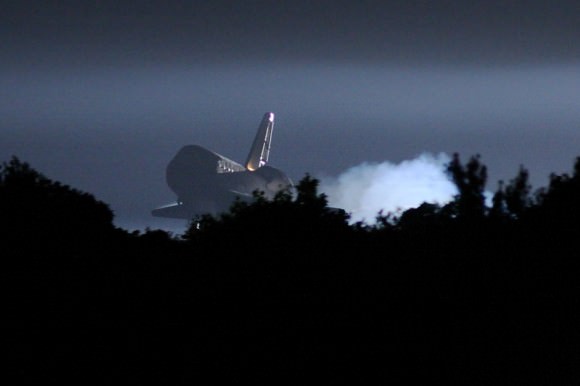
The crew was led by Shuttle Commander Mark Kelly. Also aboard were Pilot Greg H. Johnson and Mission Specialists Mike Fincke, Drew Feustel, Greg Chamitoff and the European Space Agency’s Roberto Vittori. Vittori is the last non NASA astronaut to fly on a shuttle mission.
The night landing capped a highly productive flight highlighted by the delivery of the $2 Billion Alpha Magnetic Spectrometer (AMS) to the International Space Station. AMS is a cosmic ray detector that seeks to unveil the invisible universe and search for evidence of dark matter, strange matter and antimatter.
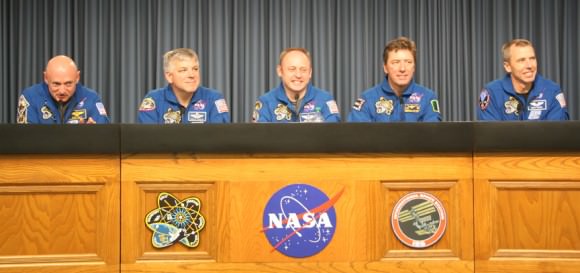
“What a great ending to this really wonderful mission,” said Bill Gerstenmaier, associate administrator for Space Operation at a briefing today for reporters “They’re getting great data from their instrument on board the space station. It couldn’t have gone any better for this mission.”
Mike Leinbach, the Space Shuttle Launch Director, said, “It’s been a great morning at the Kennedy Space Center. Commander Kelly and his crew are in great spirits.”
Four members of the crew conducted 4 spacewalks during the flight, which were the last by shuttle crew members during the space shuttle era. Simultaneously they completed the construction of the US portion of the ISS.
During the flight, Mike Fincke established a new record of 382 days for time a U.S. astronaut has spent in space. He broke the record on May 27, his 377th day on May 27, by surpassing previous record holder Peggy Whitson.
STS-134 was the 134th space shuttle mission and the 36th shuttle mission dedicated to ISS assembly and maintenance.
“You know, the space shuttle is an amazing vehicle, to fly through the atmosphere, hit it at Mach 25, steer through the atmosphere like an airplane, land on a runway, it is really, really an incredible ship,” said Kelly.
“On behalf of my entire crew, I want to thank every person who’s worked to get this mission going and every person who’s worked on Endeavour. It’s sad to see her land for the last time, but she really has a great legacy.”
After the landing at the Shuttle Landing Facility (SLF) , Endeavour was towed back into the Orbiter Processing Facility (OPF) where she will be cleaned and “safed” in preparation for her final resting place – Retirement and public display at the California Science Center in Los Angelos, California.
With the successful conclusion of Endeavour’s mission, the stage is now set for blastoff of the STS-135 mission on July 8, the very final flight of the three decade long shuttle Era.
“We’ve had a lot going on here,” said Mike Moses, space shuttle launch integration manager, “Being able to send Atlantis out to the pad and then go out and land Endeavour was really a combination I never expected to have.
It’s been a heck of a month in the last 4 hours !”
Shuttle Endeavour Landing Photos by Mike Deep for Universe Today
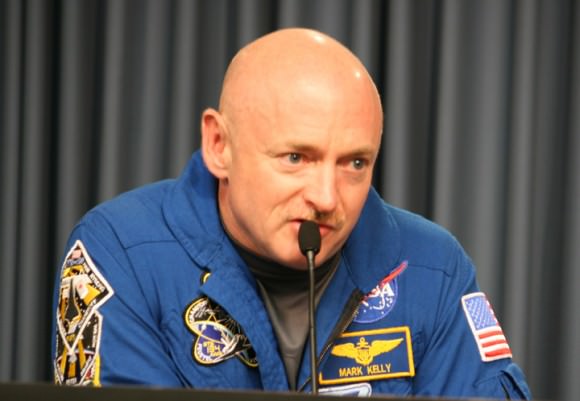
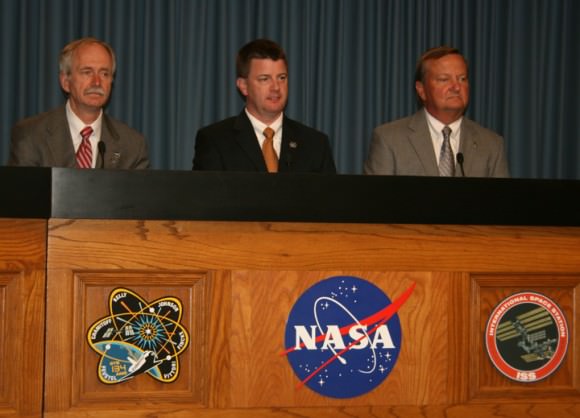
Bill Gerstenmaier, NASA Associate Administrator for Space Operations, Mike Moses, Space Shuttle launch integration manager at NASA KSC, Mike Leinbach, Space Shuttle Launch Director at NASA KSC, laud the hard work and dedication of everyone working on the Space Shuttle program. Credit: Ken Kremer
Read my related stories about the STS-134 mission here:
Amazing Photos and Milestone Tributes Mark Last Space Shuttle Spacewalk
Awesome Hi Def Launch Videos from Endeavour
Spectacular Soyuz Photo Gallery shows Unprecedented View Of Shuttle Docked at Station
Ultimate ISS + Shuttle + Earth Photo Op Coming on May 23 from Soyuz and Paolo Nespoli
Endeavour Blasts Off on Her 25th and Final Mission
Endeavour Unveiled for Historic Final Blastoff
Looking to the Heavens with Endeavour; Launch Pad Photo Special
Endeavour Astronauts Arrive at Cape for May 16 Launch
NASA Sets May 16 for Last Launch of Endeavour; Atlantis Slips to July
Endeavour’s Final Launch further delayed another Week or more
On the Cusp of Endeavour’s Final Flight
Brush Fires Erupt at Kennedy Space Center during Endeavour’s Last Countdown
Commander Mark Kelly and STS-134 Crew Arrive at Kennedy for Endeavour’s Final Flight
President Obama to Attend Endeavour’s Last Launch on April 29
Shuttle Endeavour Photo Special: On Top of Pad 39A for Final Flight
Endeavour Mated to Rockets for Last Flight Photo Album
Endeavour Rolls to Vehicle Assembly Building for Final Flight

